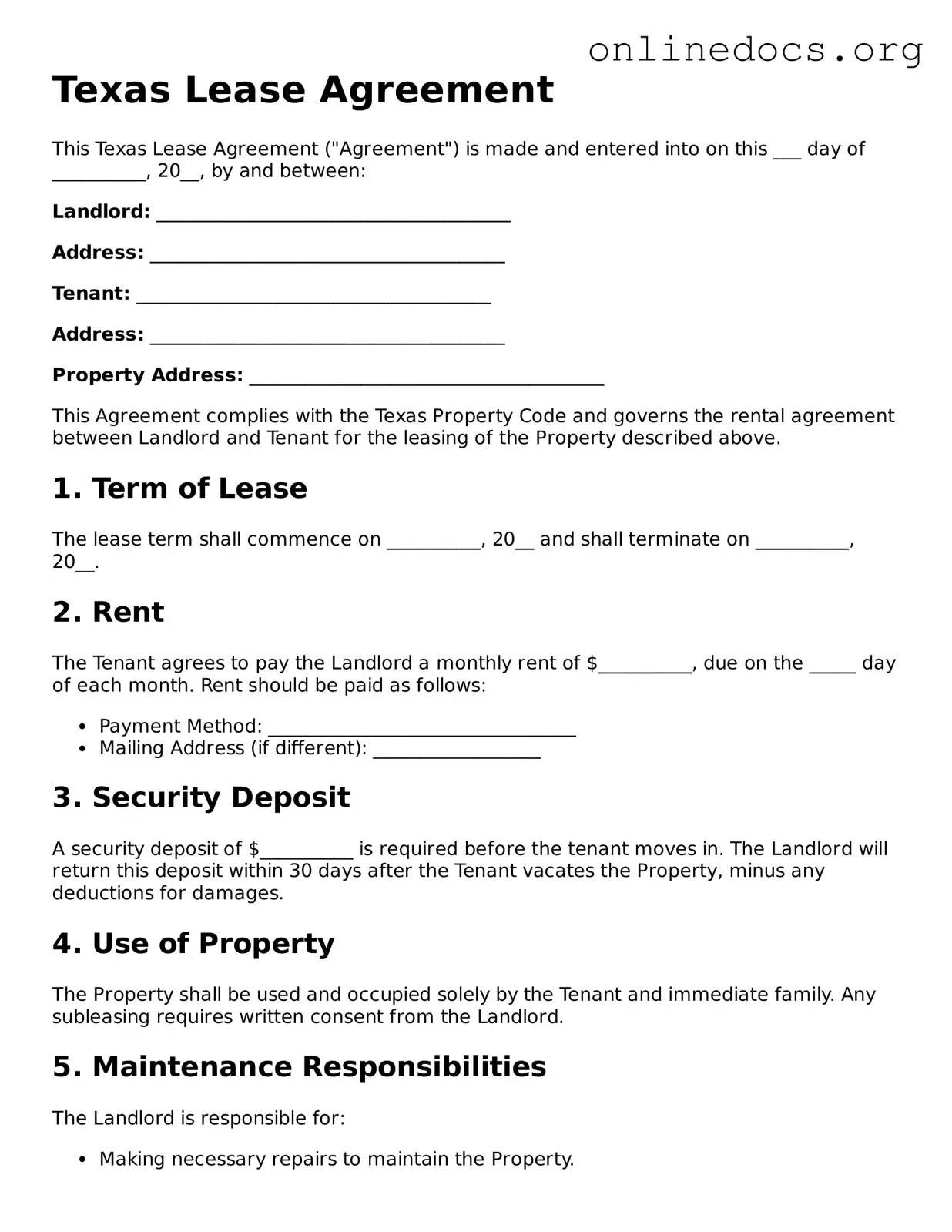The Texas Rental Agreement is similar to the standard Lease Agreement but typically includes specific provisions that cater to Texas law. Both documents outline the terms of rental, including rent amount, duration, and responsibilities of both landlord and tenant. However, the Texas Rental Agreement may also address unique state regulations, such as those pertaining to security deposits and notice requirements for eviction, ensuring compliance with local laws.
Understanding the various lease agreements is essential for both tenants and landlords. Whether it's a Residential Lease Agreement or a Commercial Lease Agreement, each document plays a vital role in defining the expectations and obligations of both parties. For more detailed information regarding lease agreements, you can visit legalformspdf.com, which offers valuable resources and templates to help navigate these important contracts.
The Commercial Lease Agreement shares similarities with the Texas Lease Agreement in that both establish the terms under which a property is rented. While a residential lease focuses on living spaces, a commercial lease pertains to business premises. Both documents detail the rights and obligations of the parties involved, including payment terms, maintenance responsibilities, and conditions for lease termination.
The Month-to-Month Rental Agreement is another document akin to the Texas Lease Agreement. This type of agreement allows tenants to occupy a property without a fixed term, providing flexibility for both parties. Similar to the Texas Lease Agreement, it includes essential details such as rental amount and payment due dates. However, it typically allows for easier termination with shorter notice periods, accommodating changing circumstances for tenants and landlords alike.
The Sublease Agreement is comparable to the Texas Lease Agreement in that it governs the rental of a property but involves an additional party. In a sublease, the original tenant rents out their space to another individual while still being responsible to the landlord. Both agreements outline the terms of use, payment obligations, and responsibilities, ensuring all parties understand their rights and duties.
The Roommate Agreement often resembles the Texas Lease Agreement in that it outlines the terms of shared living arrangements. This document specifies how rent, utilities, and other expenses will be divided among roommates. While the Texas Lease Agreement is typically between a landlord and tenant, a Roommate Agreement focuses on the relationship between individuals living together, detailing responsibilities and expectations for shared spaces.
The Lease Purchase Agreement combines elements of a lease and a purchase agreement. Like the Texas Lease Agreement, it outlines rental terms but includes an option for the tenant to buy the property at a later date. This document sets the purchase price and conditions under which the tenant can exercise their option to buy, blending rental and ownership aspects into one agreement.
The Fixed-Term Lease Agreement is similar to the Texas Lease Agreement as it establishes a specific rental period, often for one year. Both documents detail the rights and responsibilities of the landlord and tenant during the lease term. The Fixed-Term Lease provides stability for both parties, ensuring that the terms remain in effect for the duration of the lease, while the Texas Lease Agreement may include additional state-specific clauses and requirements.
